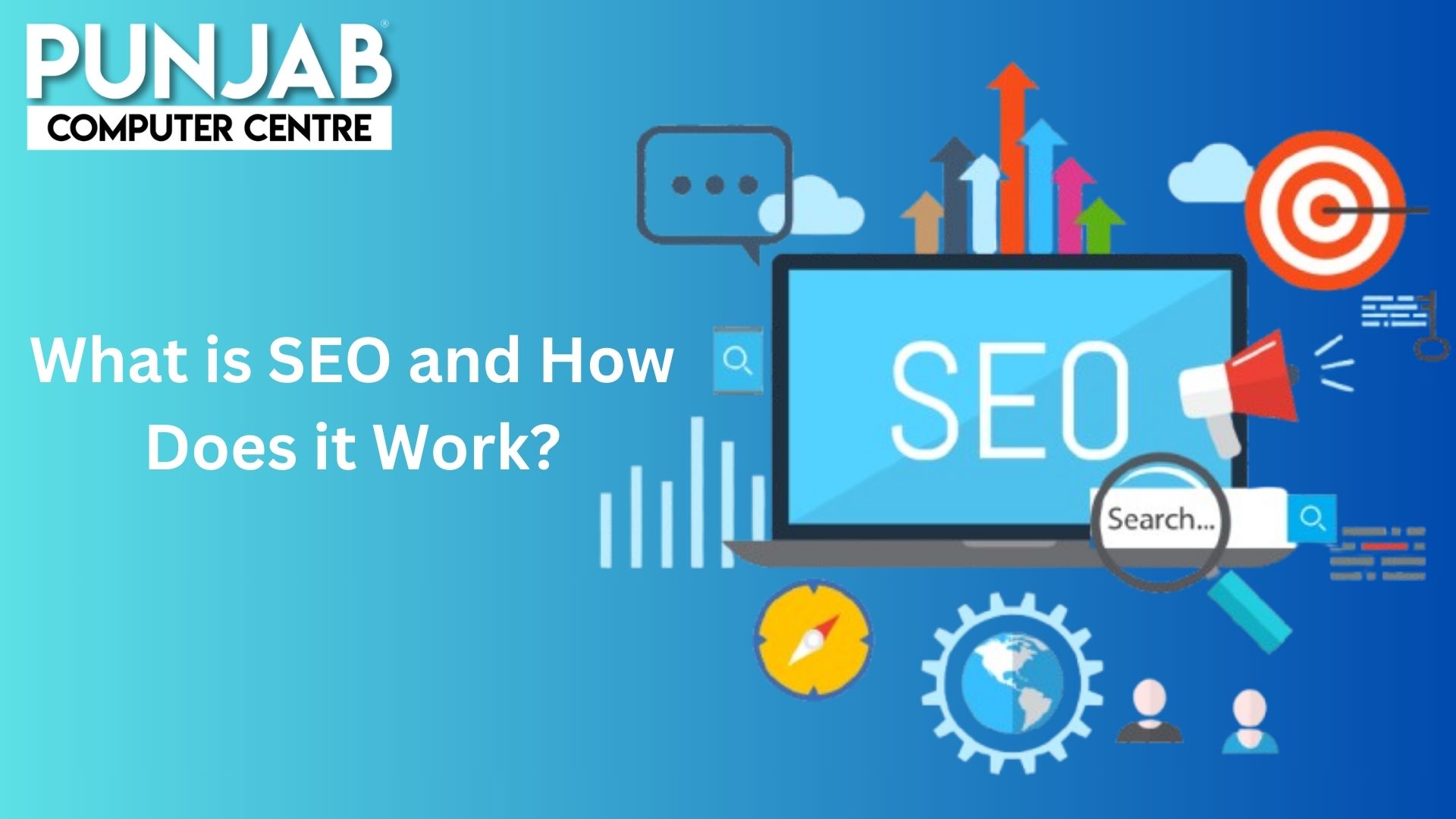In this blog we will discuss What is SEO and How Does it Work? SEO or Search Engine Optimization is the procedure of enhancing the ranking of a site or webpage through the major search engines including Google, Bing Yahoo, etc. When someone enters something on a search engine, they get a list of all related sites. It may also assist in ensuring that your website is closer to the top of these returns so that people can easily locate you.
The major aim of SEO, therefore, is to design your website with the right aspects that appeal to both the search engines and the users, hence leading users directly to your website. A well-optimized site ranks high on the search engine’s first page, thus attracting more traffic and, eventually, more customers. For more information you can visit at Punjab Computer Center Scf 98, near Lakshya Institute, Chotti Baradari, Bagichi Het Ram, Patiala, Punjab 147001
Understand What is SEO and How Does it Work?
Website ranking is determined not only by keywords but there are much more factors that search engines take into consideration. These algorithms factor in different variables to decide which websites will initially appear in any search. The fact that SEO is performed in conformity with the standards that define the ranking of websites works for it in achieving this goal.
Here’s an overview of how SEO works:
1. Keyword Research
Keywords are terms that users type into a search engine when they are searching for information. For instance, if two words were typed into the search engine as “best coffee shops” the words in that phrase are a keyword. The first process of SEO is to find out which keywords must be targeted for the business or the content. Google Keyword Planner or any other Online Keyword Tool like SEMrush can help you to know the most searched keywords that come with least competition.
When you have a list of keywords, then incorporate them into the different relevant areas of your website such as in the body of the text you have, the title tags, meta descriptions, and the headers.
2. On-Page SEO
On-page SEO can be best described as the optimizations that are done on the actual web page. These include:
Content Quality:
Hence, your website should provide relevant information that is likely to solve a user’s problem. This makes the keyword flow naturally in the content and ensures that the content itself is easy to comprehend.
Title Tags & Meta Descriptions:
These are the titles and short descriptions that the user meets in search results. The beauty of it is that visibility is improved when they contain target keywords.
URL Structure:
This implies that URLs should be brief and also contain every keyword with the view of providing precise information from the website.
Image Optimization:
This is very important as it involves the use of keywords in the image file and adding of the alt text to describe the images.
These elements assist the search engines in understanding the content of your site as well as ranking it appropriately.
3. Technical SEO
Technical SEO refers to the application of technical elements of a given website with the aim of enhancing the website’s functionalities for end users. This includes:
Site Speed:
Today’s website that ranks high allows for a faster and better experience for the users.
Mobile-Friendliness:
As most of the users access websites using their mobile devices, the website has to be responsive.
Site Structure:
Easier site organization and well-laid-out navigation also easier for search engines to crawl and index your site.
SSL Certificates:
This is because most users consider websites with https:// prefix as secure, making both users and search engines give them more credit.
4. Off-Page SEO
Unlike on-page SEO, off-page SEO entails factors outside the site regarding the promotion of the site. Backlinks are also perhaps the most crucial element in this context. Backlinks are links that are present on other websites that lead to your site. If a similar, and especially a well-known and reputable website, points to your content, search engines also determine that your website is reliable, and this will push you higher.
Some of the ways of creating backlinks include guest blogging, sharing content, or creating content on other websites.
5. Regular Updates and Analytics
SEO is not something that has an out solution. You have to call for updates on your content, daily/weekly/monthly checkups on the performance of your website, and changes where necessary. Some other utilities can be helpful to monitor the traffic, relevant keywords, or other characteristics such as Google Analytics and Google Search Console. Based on this data, you can fine-tune SEO strategy in the process of its implementation.
Conclusion
Understanding SEO is very important because SEO is an integral part of digital marketing. It operates through rearranging the contents, the layout, as well as the details on a given website making it easy for the search engine to index it. However, most people have little or no knowledge of how to get their websites to the first page of a search engine, so undertaking aspects such as keyword research, on-page, and technical optimization, backlink building, and updating the website frequently should help in the current situation assist to rank moa higher to attract organic traffic only.
Book your Appointment Today at +91 9501319926 for Digital Marketing Course in Patiala






